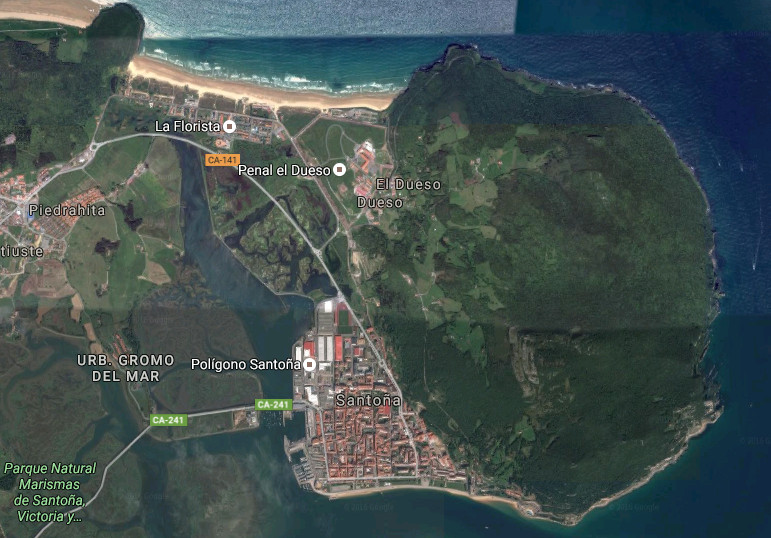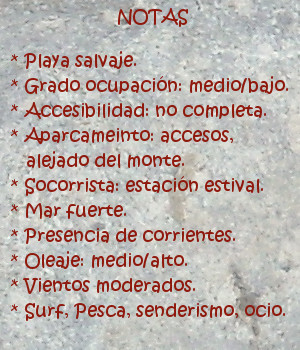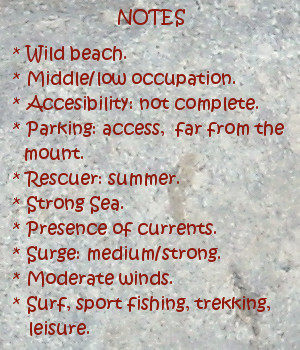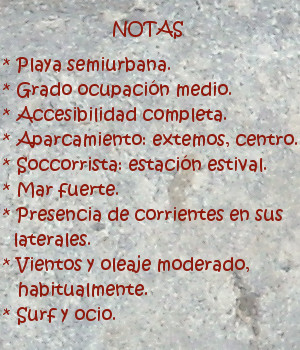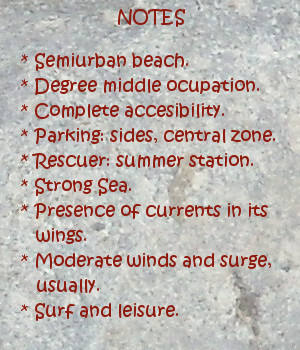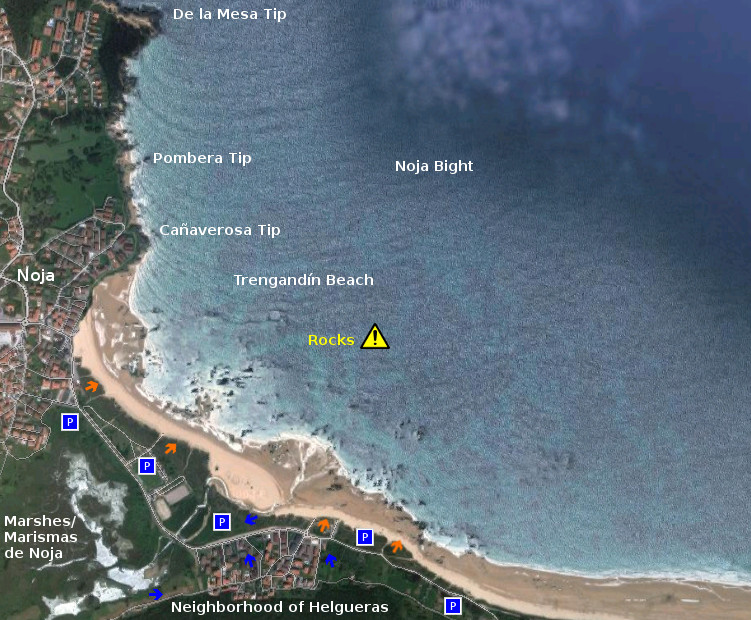Santoña, ciudad
![]() Santoña, municipio de la costa oriental de Cantabria, es una pequeña y especial ciudad marinera asentada a los pies de la cara suroeste del Monte Buciero. El 95% de su perímetro está rodeado por agua. Limitando al norte, sur y este con el Mar Cantábrico. En la cara oeste se encuentra las Marismas de Santoña, Victoria y Joyel, Parque Natural cuya extensión supera las 6000 hectáreas. El inmenso área que ocupan las marismas configura el interior del municipio hasta alcanzar la playa de Berria, situada al noroeste. La playa de San Martin, emplazada en la bahía, abarca una gran parte del paseo marítimo de la villa; conocido como El Pasaje.
Santoña, municipio de la costa oriental de Cantabria, es una pequeña y especial ciudad marinera asentada a los pies de la cara suroeste del Monte Buciero. El 95% de su perímetro está rodeado por agua. Limitando al norte, sur y este con el Mar Cantábrico. En la cara oeste se encuentra las Marismas de Santoña, Victoria y Joyel, Parque Natural cuya extensión supera las 6000 hectáreas. El inmenso área que ocupan las marismas configura el interior del municipio hasta alcanzar la playa de Berria, situada al noroeste. La playa de San Martin, emplazada en la bahía, abarca una gran parte del paseo marítimo de la villa; conocido como El Pasaje.
El Puerto Deportivo dispone en sus cercanías de un Centro de Interpretación del Parque Natural de las Marismas de Santoña. El Puerto Pesquero, anexo al centro de visitantes, delimita con el puente inicia la carretera que atraviesa las marismas y comunica la ciudad por el oeste. Esta carretera nacional es conocida como la «Carretera de los Puentes» y, además de prestar el propio servicio, da acceso al Observatorio de Aves de la Arenilla, el Monte Montehano y otras partes del estuario como la Ría de Argoños. Son sus puertos que miran a la Bahía de Santoña el principio del camino hacia el Mar Cantábrico.
Santoña, city
![]() Santoña, municipality of the oriental coast of Cantabria, is an small and special maritime city seated to the feet of the southwest face of the Buciero Mount. The 95 % of its perimeter is surrounded by water. Bordering to the north, south and east with the Cantabrian Sea. In the west is The Marshland of Victoria and Joyel, Nature reserve which extension overcomes 6000 hectares. The immense area, that the marshes occupy, forms and builds the interior of the municipality up to reaching Berria’s beach, placed to the northwest. San Martin beach, located in the bay, includes a great part of the maritime walk of the villa; acquaintance as El Pasaje.
Santoña, municipality of the oriental coast of Cantabria, is an small and special maritime city seated to the feet of the southwest face of the Buciero Mount. The 95 % of its perimeter is surrounded by water. Bordering to the north, south and east with the Cantabrian Sea. In the west is The Marshland of Victoria and Joyel, Nature reserve which extension overcomes 6000 hectares. The immense area, that the marshes occupy, forms and builds the interior of the municipality up to reaching Berria’s beach, placed to the northwest. San Martin beach, located in the bay, includes a great part of the maritime walk of the villa; acquaintance as El Pasaje.
The Sport marina has, in its surroundings, a Center of Interpretation of the Nature reserve of Santoña’s Marshes. The Fishing port, attached to the visitors’ center, delimits with the bridge that initiates the road which crosses the marshes and communicates the city through the west. This national road is known as the «Road of the Bridges» and, in addiction to giving its own service, leads to the Observatory of Birds of La Arenilla, the Mount Montehano and other parts of the estuary like the Rivermouth of Argoños. They are its ports, that meet and greet with the Bay of Santoña, the beginning of the way at the Cantabrian Sea.
![]()
 Santoña, ciudad
Santoña, ciudad
